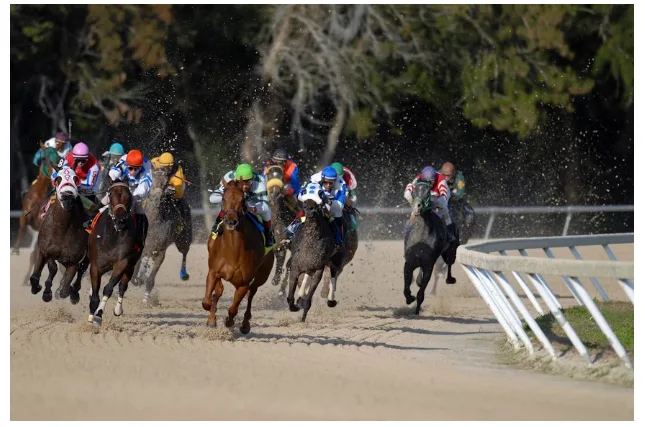2025 Amsterdam Stakes Betting Insights: Trends to Watch Out For
Every now and then, a race lines up just right for sharp handicappers, and the 2025 Amsterdam Stakes is precisely that kind of setup. Pace scenarios are layered, the draw will matter, and early-season track bias has already shown its hand.
This race rewards a deeper read, understanding how Saratoga’s surface is playing, how fitness cycles line up, and how jockeys manage pressure in short dirt sprints.
Here’s what to watch, and how to spot value before the odds shift.
Pace Patterns
Speed is non-negotiable in the Amsterdam Stakes. Its yearly lineup includes early burners primed to engage in a speed duel. That trend echoes track data showing firm, inside-favoring footing early in the meet.
Expect the rails to stay prominent unless rain reshapes the surface dynamics. Keen bettors will monitor early fractions. Any hesitation or tug in the first quarter directly impacts which horses hold under pressure at five furlongs.
Recent racing trends underline the importance of early speed. In the Grade III Poker Stakes last June 5, front-runners dominated Saratoga’s mile turf track. Seven of ten winners forced the early pace and held firm, including Donegal Momentum, who led gate-to-wire under strong split times. That day showed how decisive early fractions can be, even over a shorter distance.
With that in mind, expect a return to frontline types in Amsterdam. Keep a close eye on stall breaks and whether a pair of one-dimensional speedballs dictate the tempo. And for those looking to bet with strategy rather than instinct, you can find reliable Amsterdam Stakes picks online that factor in pace dynamics, post-position bias, and early speed ratings, offering context-rich selections rather than guessing.
Trainer–Jockey Synergies That Matter
At Saratoga, particular trainer–jockey pairings have tilted the odds in their favor. Chad Brown remains the dominant turf route handler, but on dirt sprints, Mark Casse continues to punch above his weight. His two Amsterdam entrants are worth noting for their gate speed and ground-turning muscle.
Meanwhile, Jose Ortiz, with recent strong outings, has solid rapport with both Casse milers and aggressive sprint types. His mounts are often overbet, but sharp timing in a race like this pays. If Casse and Ortiz team up on an inside speed type, expect that horse to bookend the front end and hold on deep.
Track Bias & Going Reports
Saratoga’s plush but well-draining dirt can shift from inside-favored to surface-neutral after mid-meet maintenance. Andy Serling’s track charts show consistent inner-track bias early in the 2025 season. That trend puts in-play wagers and early scratches under a microscope.
Tuesday’s maintenance and Wednesday’s light showers suggest the track will remain firm for Saturday. Without moisture to soften the top, the pattern holds. Horses drawn inside, breaking cleanly, and showing sharp early splits will have tactical leverage. Pay attention if rain enters the equation, as wet-fast conditions could neutralize the bias and give new value to mid-pack runners.
Value Angles
Identifying where runners are in their prep cycles can uncover overlooked opportunities. Horses fresh off a 35–45 day break, especially those stepping up from a trimmed allowance, have been hitting the board consistently in Saratoga’s early sprint season. This profile, lightly raced, fit, and not overexposed, has become a sweet spot for spotting value.
Recent race data backs this up. A turf-to-dirt sprinter finishing top three in a five-furlong dash last month had just 38 days between starts, showing that cross-surface momentum can translate when paired with spacing and conditioning.
In fact, early speed figures from late July indicate the sprint baseline has shifted upward, suggesting sharper splits and stronger finishing efforts from horses with tactical speed and fresh legs.
On the other hand, early shippers from Belmont have underperformed when turning around too quickly. Fatigue tends to show late in the stretch, particularly when facing a tighter Saratoga surface and high heat. Bettors should stay alert to these patterns, especially when odds don’t reflect them. Sometimes, the market misses horses who are ready to peak, not just show up.
Weather-Driven Watchpoints
Heat index for August 2 looks to hover near 85°F, with expected sunny skies and late-afternoon humidity. No rain forecast. Without moisture, the bias remains intact, and sprint times often accelerate deeper into the card.
Cold-blooded stallions may handle humidity better, but bettors should consider early scratches. Any rain on Thursday or Friday would flip this narrative. Suddenly, mid-pack runners with outside breaking positions and better endurance shine. Chargers with experience on wet-fast tracks, even if lightly placed here, become underrated. Check Friday morning’s scratch list and weather update before wagering.
Where This Race Points Next
Beyond the betting windows, the Amsterdam Stakes is a launchpad. Horses that flash speed or resiliency here could show up again in races like the Allen Jerkens or H. Allen Juvenile. Even beaten runners might be playable next time out if they show form against the track bias. So make sure to follow the effort, not just the result.






